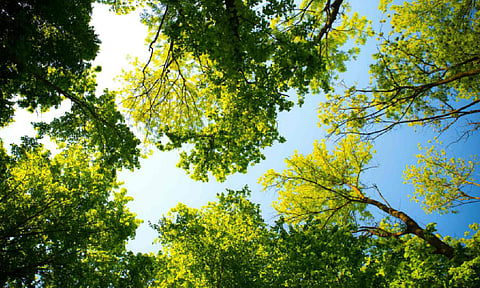

CHENNAI: The Greater Chennai Corporation planted one lakh trees across Chennai on the World Environment Day (June 5) this year. So, what's the overall tree count now? No one seems to have the answer yet.
Chennai is the only major metro in India without a full-fledged tree census. Unlike Mumbai, Pune, Bengaluru, all of which have conducted citywide counts, Chennai has only been floating plans for over a decade for the same. Officials from the Forest Department now confirm there is no effort to conduct a census currently underway.
In contrast, Mumbai recorded over 29 lakh trees in its 2017 census. Pune completed its survey in 2016, and Bengaluru has institutional mechanisms, like a Tree Committee, under the state's tree protection law.
Chennai's past efforts include a 2011 census attempt by the Tamil Nadu Forest Department, limited to institutional areas like IIT-Madras, and a 2017 geo-tagging plan under the Smart City Mission, both of which did not have a definitive outcome.
Meanwhile, the city is undergoing massive ecological transformation. According to the Urban Heat Stress Tracker, a report by the Centre of Science and Environment in collaboration with the CMDA, the green cover dropped from 34.2% in 2003 to 20.5% in 2023. It also points out that in just two decades, the built-up area has consumed nearly three-fourths of the city, a jump from 31.6% to 72.9% built-up area, leaving little room for trees to thrive.
The study also recorded Urban Heat Island (UHI) intensities of 2.5–3°C, particularly in dense zones like Teynampet, Egmore, and Perambur.
The report recommends immediate green cover audits which is essentially a structured tree census needed to help plan urban heat adaptation.
Local NGOs have shown that such audits are feasible. In 2016, Nizhal and TEEMS INDIA conducted a GIS-based tree survey in Ward 176, covering areas like Besant Nagar, Kakkan Colony, and Urur Kuppam. Using Differential Global Positioning System and Geographic Information System (GIS) tools, the team assessed each tree's species, health, and survival outlook. The study revealed that 16.36% of trees, including exotic species, were damaged during Cyclone Vardah.
"A database that is measurable, verifiable, and reliable is possible. We've done it at the ward level," says Shoba Menon, founder of Nizhal. "Yet the city as a whole never prioritised it."
These audits, it notes, are essential for identifying planting gaps, monitoring species survival, and ensuring equitable green distribution.
She stresses that a tree census is essential not just for biodiversity or beautification, but for guiding urban planning, ensuring community participation, and protecting environmental health.